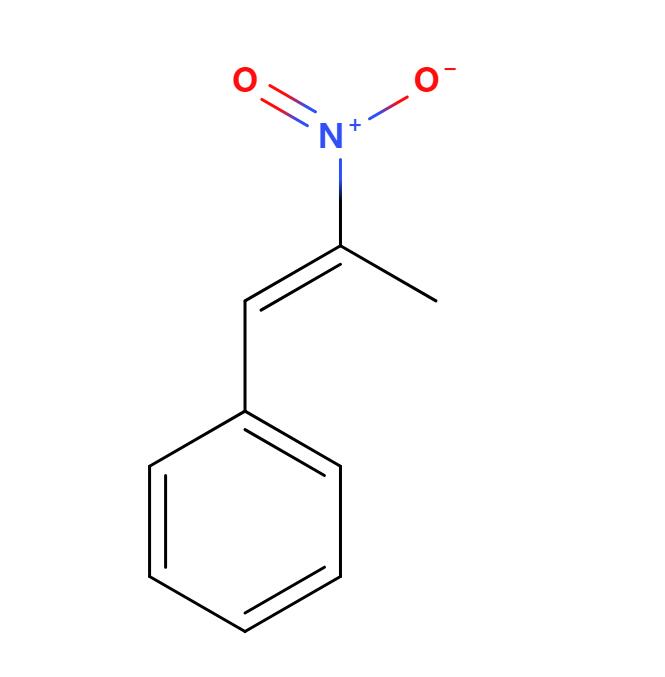1-Phenyl-2-Nitropropene CAS 705-60-2 P2NP Product Images

1-Phenyl-2-Nitropropene P2NP
| Product Name: | P2NP/1-Phenyl-2-nitropropene |
| CAS NO: | 705-60-2 |
| EINECS: | 627-363-3 |
| Molecular Formula: | C9H9NO2 |
| Molecular Weight: | 163.17 |
| Boiling Point: | 263.0±9.0 °C(Predicted) |
| Melting Point: | 63-65 °C (lit.) |
| Appearance: | Yellow Crystalline Powder |
Chemical Structure Depiction

1-phenyl-2-nitropropene Description
1-Phenyl-2-nitropropene, or simply phenyl-2-nitropropene, or P2NP, as it is commonly referred to, is a chemical compound from the aromatic group of compounds, with the formula C9H9NO2. It is a light-yellow crystalline solid with a distinct smell. Phenyl-2-nitropropene is used in the pharmaceutical industry to manufacture the drug Adderall, an amphetamine mixture used to treat ADHD and narcolepsy. P2NP and other similar nitrostyrenes are also employed in the clandestine manufacture of drugs of the amphetamine class, and are listed as drug precursors in many countries.
Uses
In the pharmaceutical industry, P2NP is used to produce a racemic amphetamine mixture, branded under the trade names Adderall and Mydayis, amongst others. In this case, the double bond is hydrogenated and the nitro group is reduced,[10] thus 1-phenyl-2-nitropropene becomes 1-phenyl-2-aminopropane, which is another name for amphetamine. Different reducing agents commonly lithium aluminium hydride (LAH), sodium borohydride,aluminum amalgam or Raney nickel are used in suitable solvents like isopropyl alcohol or tetrahydrofuran.
The above diagram depicts P2NP reduction to amphetamine by either LAH, sodium amalgam, Raney nickel, or palladium used as catalysts. Platinum, in the form of Adams’ catalyst, can also be used.
P2NP can also be reduced to phenylacetone (P2P), the precursor in the synthesis of methamphetamine by a few methods. One in which phenyl-2-nitropropene is reduced to phenyl-2-nitropropane using sodium borohydride, followed by hydrolysis of the nitro group with hydrogen peroxide and potassium carbonate to produce phenylacetone (1-phenyl-2-propan-2-one). In another method, iron is the reducing agent and hydrochloric acid or acetic acid are used as catalysts forming an intermediate which hydrolyzes into phenylacetone as well.
Safety and Storage
P2NP is labeled as harmful by the GHS, and is a known irritant. Thus, breathing fumes and direct skin and eye contact should be avoided. The median lethal dose for oral exposure in rats and mice is greater than 500 mg/kg and 1176 mg/kg, respectively. Based on available data, the classification criteria are not met to classify P2NP as a carcinogen. However, the toxicological properties have not been thoroughly investigated.
P2NP should be stored at 2 °C to 8 °C and away from strong oxidizing agents. At higher temperatures, P2NP is not very stable, and degrades with time.

